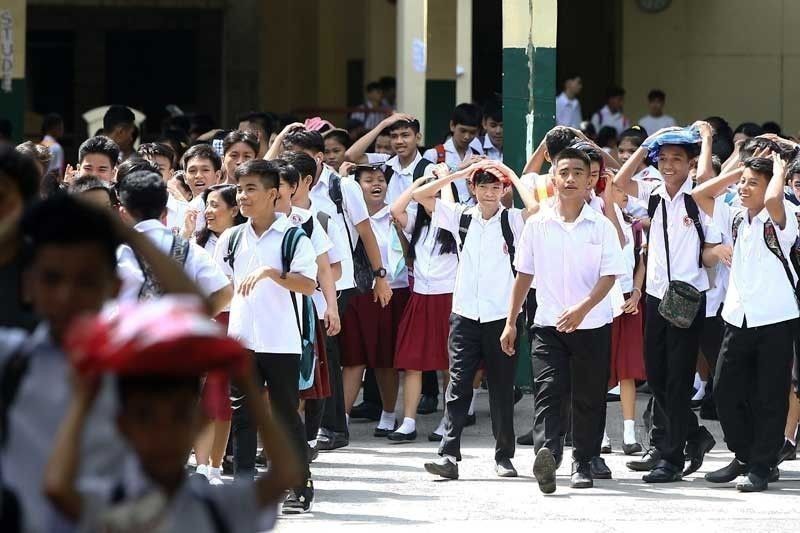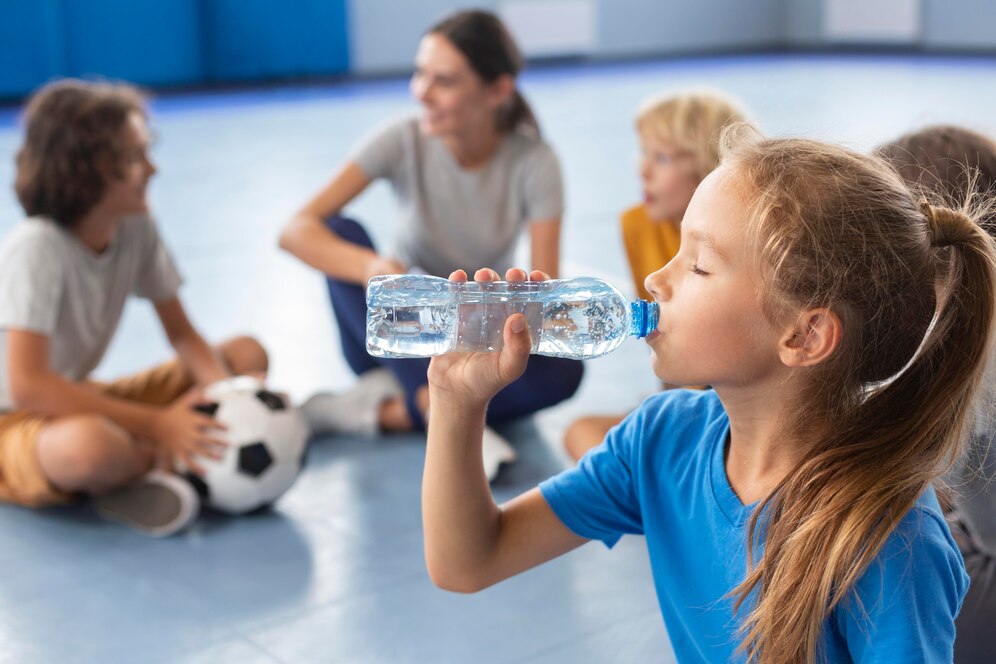
Heatwaves and Class Schedules: Tips for Parents and Students
The Philippines, a beautiful tropical country known for its stunning beaches and warm weather, has faced a new challenge recently: scorching heatwaves. With a heat index that soared to dangerous levels in 2024, exceeding 46°C (115°F) in some areas according to PAGASA (the Philippine Atmospheric, Geophysical and Astronomical Services Administration), these extreme temperatures have become a serious health hazard.
Compared to previous years, the increase in heat in the Philippines has been significant. While the country is accustomed to warm weather, the intensity and duration of these heat waves are unprecedented and has given rise to many heat related illness. This increase in temperature is attributed to various factors, including climate change and the urban heat island effect, where concrete jungles trap heat and contribute to warmer nights.
The combination of high humidity and extreme temperatures creates a dangerous situation, especially for school children. With these concerns in mind, let’s explore some tips to help parents and students cope with the hot weather and prevent heat-related illnesses.
The Challenge of Extreme Heat in the Philippines

Heatwaves are a growing concern in the Philippines. These scorching periods not only disrupt daily life but also pose a significant threat to health and safety. Heat stress can easily overwhelm the body’s ability to regulate temperature, leading to a variety of heat-related illnesses.
Schools, in particular, face unique challenges during heatwaves. School buildings may not be adequately equipped with air conditioning units to keep classrooms cool, and outdoor activities become risky due to the hot environment. Understanding how to prevent heat-related illnesses and creating a safe learning environment during heatwaves is crucial for the well-being of students and teachers alike.
Understanding Heat-Related Illnesses
During scorching heat waves, the body struggles to cool itself down in an extremely hot environment. This can lead to a variety of heat illness if proper precautions aren’t taken. Here are the three main conditions to be aware of:
Heat Exhaustion
This occurs when the body loses fluids and electrolytes faster than it can replenish them. This is often caused by a combination of hot weather, strenuous activity, and inadequate hydration. Symptoms of heat exhaustion include heavy sweating, weakness, dizziness, nausea, and headache. Recognizing these early signs is crucial. Taking steps to cool down and rehydrate can prevent progression to a more serious condition like heat stroke.
Heat Stroke
In a medical emergency, heat stroke happens when the body’s temperature rises rapidly, exceeding its ability to regulate it. If not treated promptly, this can lead to organ damage and even death. Symptoms of heat stroke include confusion, seizures, extremely high body temperature (often above 103°F or 39.4°C), and loss of consciousness. Immediate medical attention is critical in this case. Call emergency services or proceed to the nearest hospital immediately.
Heat Cramps
These are painful muscle cramps, usually in the legs and abdomen, caused by dehydration and electrolyte imbalance. They often occur after strenuous activity in hot weather. While not as serious as heat exhaustion or heat stroke, heat cramps can be a warning sign of potential heat stress. Taking a break in a cool place, stretching, and rehydrating with fluids containing electrolytes can help alleviate heat cramps.
How students can cope with extreme heat

Staying cool and safe during scorching heatwaves is crucial for students of all ages. Here are some practical tips and strategies that students, parents, and teachers can implement to help students cope with extreme heat and ensure a productive learning environment.
Practical Tips for Staying Cool
When the heat is on, staying cool is key! Here are some simple yet effective strategies students can adopt to regulate their body temperature and feel comfortable throughout the day
Loose-fitting clothing
During heatwaves, ditch the tight clothes! Opt for breathable, loose-fitting clothing made from natural fibers like cotton or linen. These fabrics allow for better air circulation, helping sweat evaporate and regulate your body temperature.
Keep yourself and your child cool
Avoid strenuous activity outdoors during the peak heat hours of the day, typically between 10 am and 4 pm. Whenever possible, seek shelter in air-conditioned spaces like libraries, malls, or even your own home. Take advantage of air conditioning or electric fans to cool down and prevent heat stress. Keep them away from direct sun exposure or hot air.
Hydration and Nutrition
What you put in your body matters during a heatwave. The following are some dietary choices and hydration habits that can help students stay cool and energized
Hydrate, hydrate, hydrate!
This can’t be stressed enough. Encourage students to drink plenty of water throughout the day, even if they don’t feel thirsty. Thirst is already a sign of high temperatures that can lead to dehydration. Carry a reusable water bottle and sip on it frequently. Water is the best choice, but for extended periods outdoors or during physical activity, consider sports drinks to replenish electrolytes lost through sweat.
Light and cool food may help
Pack light, cool lunches and snacks for school. Opt for fruits and vegetables with high water content, such as watermelon, cucumber, celery, and oranges. These foods help maintain hydration and keep your body temperature regulated. Avoid heavy meals and processed foods that can make you feel sluggish in the heat.
Sun Protection
While staying cool takes priority, sun protection remains important even during heatwaves. Encourage students to wear wide-brimmed hats, sunglasses, and sunscreen with SPF 30 or higher to protect themselves from harmful UV rays. Seek shade whenever possible, especially during peak sun hours.
School Environment Adjustments
Schools play a vital role in creating a safe and cool learning environment during heatwaves. Here are some ways schools can adjust to ensure student well-being:
Keep space cool
Schools should play a vital role in providing a cool environment for learning during heatwaves. Well-maintained air conditioning units are ideal, but proper ventilation with fans and open windows can also help. Encourage students to dress appropriately in loose-fitting clothing or light colored clothing and bring reusable water bottles to stay hydrated throughout the day for heat safety. The local health department discourages hot classrooms from operating.
Working Together
Teachers and students can work as a team to create a comfortable learning environment. Teachers can adjust lesson plans to minimize strenuous activity during peak heat hours. For example, focus on discussions, reading assignments, or quizzes instead of intense physical activities. Students should be encouraged to communicate any signs of discomfort and take breaks in cooler areas if needed.
Activities and Scheduling
Adjusting activities and schedules can significantly improve student comfort and focus during heatwaves. The following are some ways to adapt the school day for optimal learning:
Shifting Schedules
If possible, consider adjusting school schedules to avoid peak heat hours. Schedule more physically demanding activities, such as gym class or outdoor sports, for cooler mornings or afternoons. This will help students avoid overheating and allow them to perform better during these activities.
Keep activities indoors
Opt for indoor activities that minimize exposure to the hot environment or excessive heat from outdoors. Keep indoor temperature cool at all times. These can include science experiments, group discussions, movie screenings, educational games, or even board games. Creative and engaging indoor activities can keep students cool and focused while learning continues.
The scorching heat in the Philippines presents challenges, but with proper preparation and collaboration, we can keep students safe and learning. By following these tips and staying informed about weather forecasts, we can ensure a productive and healthy school year for everyone.

Celebrate Life’s Milestones in Camella!
Make unforgettable memories in a Camella home.
Our communities are designed to elevate your living experience.

